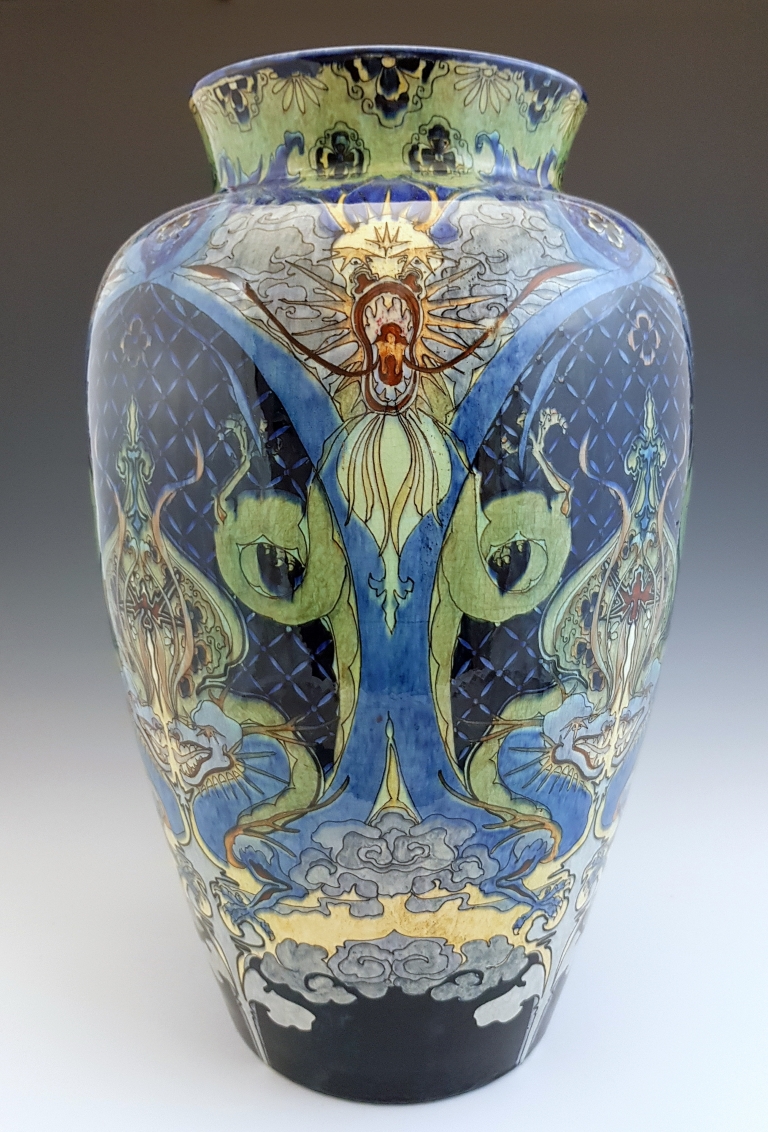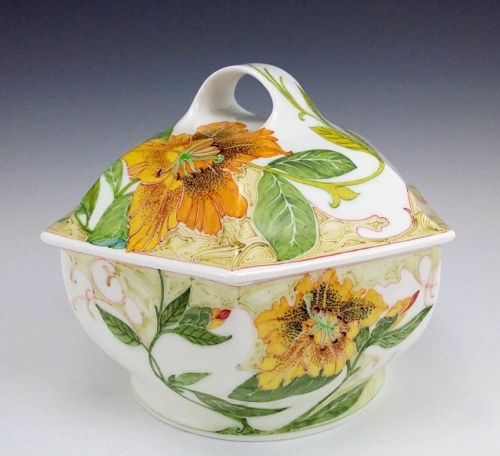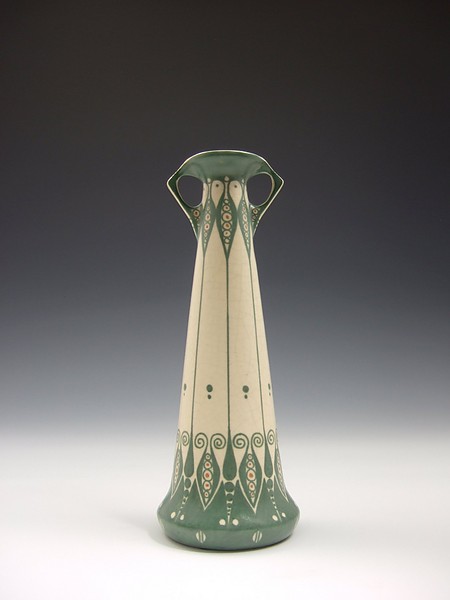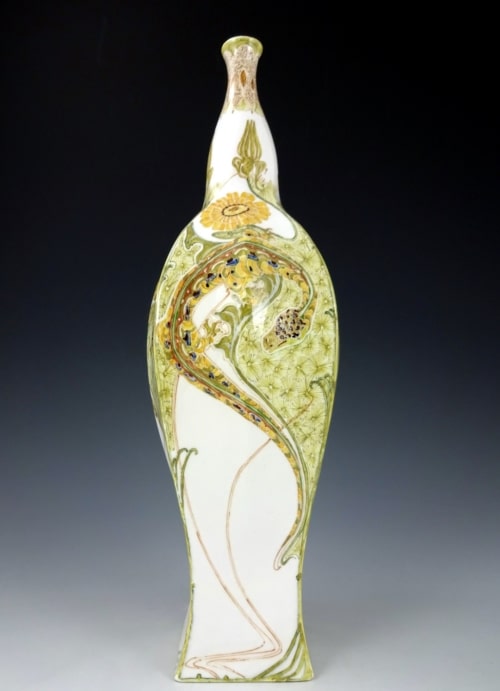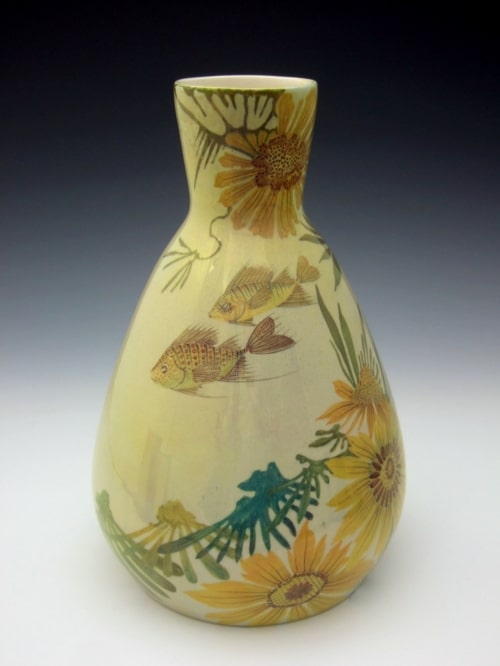Description
~Sold~
A rare and important Rozenburg earthenware vase (model 71 ‘Japanese vase’) painted by Willem Frederik Haas and Samuel Schellink between 19 and 26 September 1896. However, the remarkable decorative design is most likely made by Dominicus de Ruiter. De Ruiter was appointed chef of the Rozenburg painting studio in August that year. He underwent education at the Academy of Visual Arts and worked as lithographer prior to his arrival at Rozenburg. In the spring of 1896, Anton Seder’s important and later world famous work “Das Their in der dekorativen Kunst” was published. The first part, ‘die Wasserthiere’, included richly decorated pages with illustrations of dragons, in particular the so-called Japanese water dragons. It is clear that Seder’s drawings of dragons were a major influence on the newly appointed chef of the Rozenburg painting studio, Dominicus de Ruiter;

About the decoration on this vase; when looked at from a distance, one can see 4 large poppy heads. The base of each poppy head is shaped by two dragons spitting at each other. At the top, between each poppy head, a fierce dragon looks straight at you, surrounded by billowing grey clouds of smoke.
You can also see two Japanese masks. The large poppy head resembles a mask with a friendly smile, with eyes shaped by the curling green tails of the dragons. The other, rather intimidating mask can be seen at the side with de fierce dragon. In each poppy head, one can see a net-like pattern, trapping the Japanese water dragons in the poppy head.
Read more about this remarkable vase here: ‘Dragons in Dutch Art Nouveau’
